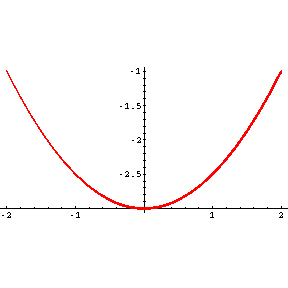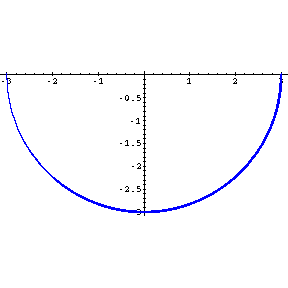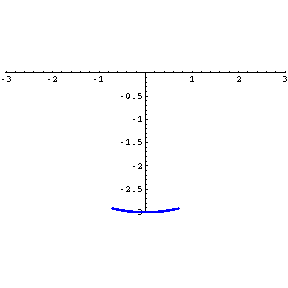
FIGURE 1
The most striking property of parabolic mirrors is the focusing. Namely, all light rays parallel to the symmetry axis are reflected to pass a single focal point. (See, for instance, Grossman, ``Calculus", Section 8.2, pp. 550-559).

Mirrors of parabolic surfaces are, however, very difficult and expensive to produce. The most common curved mirrors are spherical mirrors, which do not exactly focus light rays at a single point. In other words, an image formed by a spherical mirror is, rigorously speaking, always slightly out of focus. This phenomenon is called spherical aberration.

The effect of spherical aberration is more significant for light rays far from the symmetry axis. One method to reduce spherical aberration is to use variable-aperture diaphragm to block off light rays far from the symmetric axis. By allowing only rays near the axis to strike the mirror, a quite satisfactory focused image can be formed by a spherical mirror.

All we said in the above can be justfied rigorously by Calculus. Let us study some related problems.
(i) All light rays parallel to the symmetry axis of a parabolic mirror are reflected through a single focus;
(i) A spherical cap does not bring light rays parallel to the symmetry axis to a single focus.
(ii) Graph the parabolic mirror defined by
(iii) Combine the graphs of the above two mirrors into a single figure.
(iv) Place a variable-aperture diaphragm of appropriate size at an approriate location to block off light rays far from the y-axis so that a remaining (small) part of the spherical cap can produce pretty good focused images.
(ii) Why can a small part of the spherical mirror do a pretty good job of concentrating vertical light rays at a single point?
(ii) Find a (small) spherical mirror, that does ``almost" the same job of focusing vertical light rays as the parabolic mirror y=h(x) in Part (i) does.
In scientific researchs and many applications, people do need high quality parabolic mirrors, which provide the sharpest images. There exists an innovative and cost-effective method to produce accurate parabolic mirrors with large size, using a spinning liquid! Please visit the LIQUID MIRROR TELESCOPES page by Mark Frantz (IUPUI) to find more.